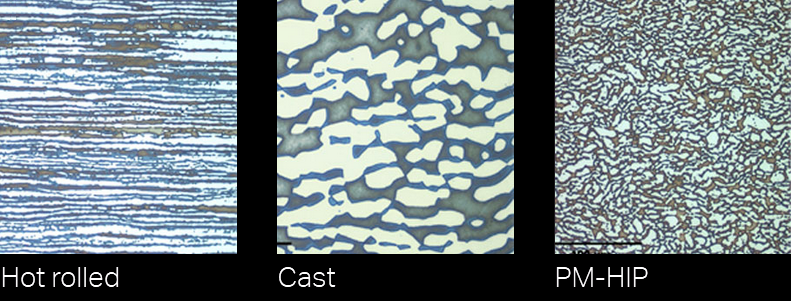About the author:
Jan-Olof Nilsson, Senior Advisor, Materials Technology at MTC Powder Solutions

Jan-Olof has an extensive background in materials technology and especially physical metallurgy. He was heavily involved in the development of the duplex and super duplex family of materials at Sandvik AB, leading the Physical metallurgy department, being key in understanding the material behavior. He has held position as Professor in Physical metallurgy at Chalmers University of Technology in Sweden and published a wealth of articles on materials technology. As from April 2020, Jan-Olof is Senior Advisor, Materials Technology at MTC Powder Solutions.
Duplex stainless steels (DSS) are unrivalled in many applications where a combination of strength and corrosion resistance is required. However, despite their resistance to corrosion some failures in DSS used in seawater have been observed. The failures have been associated with the presence of hydrogen in combination with an external load and explained by a phenomenon called hydrogen-induced stress corrosion (HISC).
Although DSS usually do not require electrochemical protection during service they may be influenced by cathodic protection used to protect components made by less resistant materials such as mild steel. Under these conditions water reduction can occur leading to uptake of atomic hydrogen. Cracking of the DSS due to HISC may ensue if the component is loaded above a critical threshold stress.
Experience has shown that DSS with a fine microstructure are less sensitive to HISC than those that are coarse-grained. This has led to design rules in which the austenite spacing is a crucial parameter. An austenite spacing of 30 micron has been suggested as a rule of thumb but it is expected that an even smaller spacing is beneficial. The effect of austenite spacing has been explained by the pile-ups of dislocations being smaller in fine-grained structures.
There are fundamental limits as to how fine microstructures can be produced using conventional metallurgy. This limit can be circumvented using powder technology, which offers a means of producing fine-grained DSS with an austenite spacing that conventional material cannot achieve. Comparison of the microstructure of a duplex stainless steel produced by three different manufacturing techniques can be seen in below figure.
